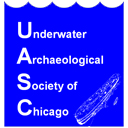As one of the Supporting Organization's for Chicago's Christmas Ship, we would like to announce it's arrival for this 2013 Holiday.(Website: christmasship.org/) The Mackinaw Coast Guard Cutter will arrive loaded with Christmas Trees for the needy on December 6th at 8:30am directly south of Navy Pier. She will be off-loaded by many youth organizations including Sea Cadets, Venture Crews, Sea Scouts and Young Marines and loaded onto trucks for distribution to more than a thousand deserving families throughout Chicago by Ada S. McKinley Community Services on the morning of December 7th at 10am. This event is a wonderful pre-holiday event that directly correlates to the Christmas Schooner Play/Dinner Event we have planned as a group. Christmas Tree Ship History.......... The Original Christmas Tree Ship Captains Schuenemann The story of the beginning of the Christmas Tree Ship is the story of the Schuenemann family, and most particularly the story of Capt Herman Schuenemann and his last ship, the Rouse Simmons. In approximately 1885 August and his brother Herman Schuenemann moved to Chicago to seek out their fortune. Chicago’s Harbor was one of the busiest in the world at this time with over 20,000 vessels entering and leaving annually. As competition was fierce, the brothers became excellent businessmen as well as sailors. Although they made a relatively good living, two-thirds of their annual income was generated between Thanksgiving and Christmas with the sale of trees. August had become a truly competitive trader and by 1895 had a well-established reputation as a Christmas tree merchant. In early November of 1898, August was in Sturgeon Bay looking for trees that he would bring to Chicago on a ship named the S. Thal. He purchased 3,500 trees and on November 9th departed with 3 crewmembers for Chicago’s Harbor. A few days later the S. Thal was caught in a horrific storm off the coast of Glencoe, IL and perished. There were no survivors. Herman did not sail with his brother that year, probably due to the birth of his twin daughters in October. Continuing with the efforts of his and Augusts, Herman now had a business without a partner. Herman sailed further and further north with each passing year. This allowed him to purchase better quality trees at a lower cost but this also made Herman and his crew incur poor and unpredictable weather the further north they sailed. Over the next few years Herman had lost one ship and almost lost another. This triggered him to purchase larger ships (the largest measuring 130 feet long and 26 feet wide.) With the larger and more stable ships, Herman went as far north as the Soo Canal to purchase his trees from the Indians. Eventually, he would hire his own crew to cut and prepare the trees for the journey back to Chicago. In 1910 Schuenemann had established the ” Northern Michigan Evergreen Nursery” whose address was given as the “SW corner Clark Street Bridge.” This allowed him to lower his expenses by selling his cargo directly from the deck of his ship. No longer would Capt. Schuenemann pay laborers to carry trees to store owners and local grocers. He was trying to eliminate as much of the middleman as possible. While Herman sold trees and greens on deck, his daughters worked below by the warmth of the cabin stove making wreaths out of cut greens. In order to even further lower his expenses, sometime between 1910 and 1912 Herman purchased 240 acres in upper Michigan. In salaries for tree cutters, crew, provisions, towing fees and miscellaneous expenses, a single trip would have cost him approximately $3,000. Any failure to return with trees would leave Herman flat broke. In order for Herman to cover all of these expenses as well as make the bulk of his annual income, he now had to transport as many trees as possible with each journey. Loaded with Trees By 1911, Schuenemann owned a large vessel named the Rouse Simmons. A ship of her magnitude could carry more than 5,000 trees that were lashed down tightly. The weight of these trees would not become a factor unless they became wet and froze. If this was to happen the weight could now become detrimental to the journey’s success. Schuenemann had the Rouse Simmons recaulked during his passage to Chicago in 1911, but failed to recaulk her prior to leaving Chicago for his 1912 adventure. The neglect to recaulk the Rouse Simmons in 1912 was probably due to financial strains caused by Schuenemann being sued for failure to repay an old debt. The decision not to recaulk the Rouse Simmons would be a fatal one. She was last seen on November 23, 1912, between Kewaunee and Two Rivers Wisconsin, with distress signals flying. Capt. Schuenemann and his crew of 16 went down just 30 miles south of his boyhood home of Ahnapee, Wisconsin. Throughout the years that the Schuenemann’s made their living from the Maritime Christmas Tree business, it rose, peaked and by 1912 was fading. What began as an informal barter system evolved into big business controlled by the high-volume wholesalers. As the railroads and improved highways were now the most efficient way of moving Christmas trees throughout the Midwest, old wooden bottomed vessels became obsolete. Chicagoans remembered ” Christmas Tree” Schuenemann for at least the next generation. In December of 1934, in the height of the depression, three middle-aged women opened a store on the Near North Side of Chicago. The sign, which brought back many good times and feelings, read CAPTAIN AND MRS. SCHUENEMANN’S DAUGHTERS. Passerby’s entered the store, shared stories of their childhood on the docks and bought the tree they were to display in their parlor. That was the only year that the daughters had a shop. That was probably due to the depression, but it was said that so few people had given so much joy to so many people, as did the Schuenemann family, just for doing their job.
